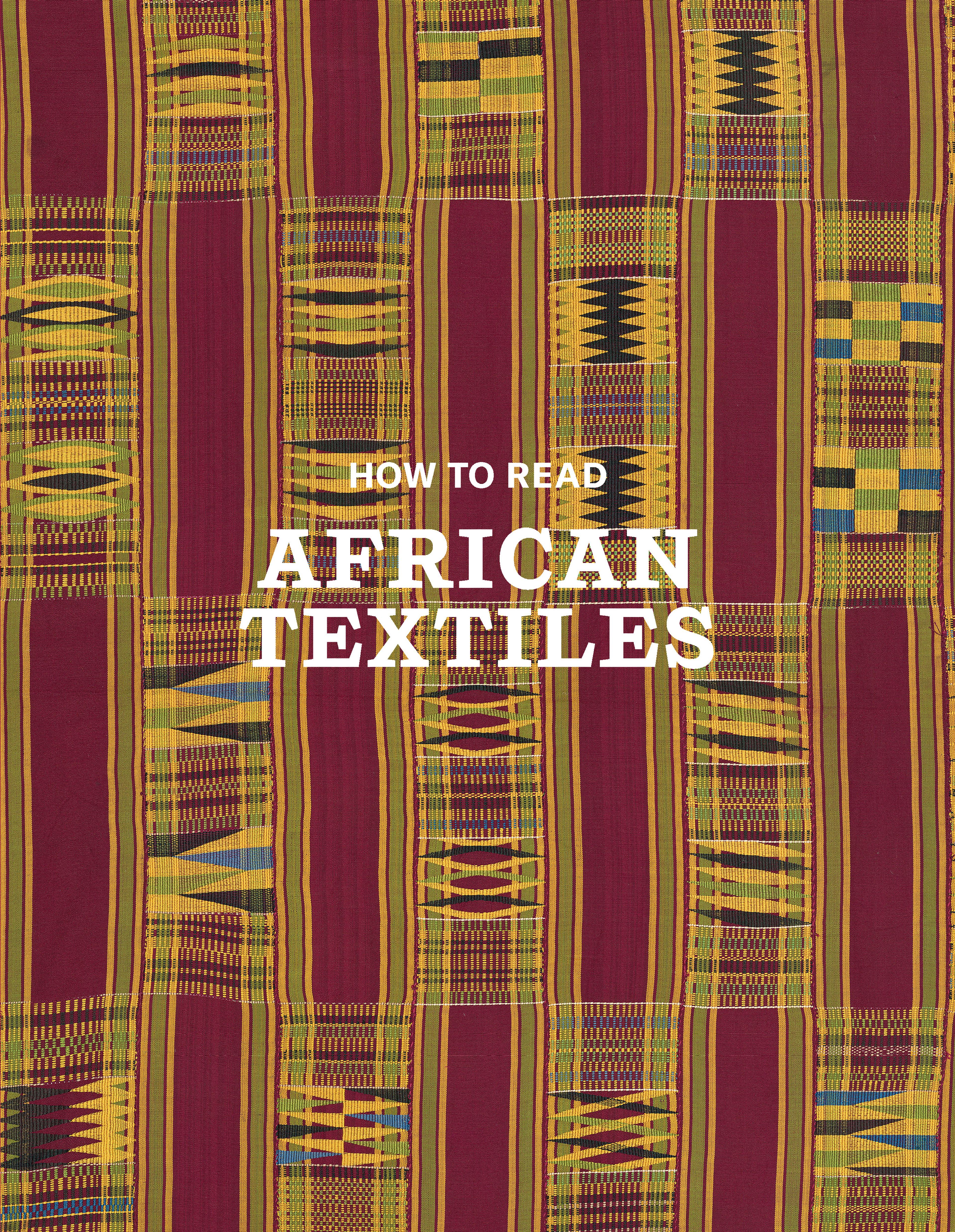Wrapper
Wrapped around the waist, handwoven and indigo-dyed textiles serve as prestige items purchased by and gifted to women living along the upper reaches of the Volta River. While simpler versions might be worn as part of daily attire, women don finer examples embellished with linear and geometric patterning during important occasions, including births, marriages, harvest celebrations, and initiation ceremonies. Such highly valued garments are carefully stored when not in use. They can be passed down from mother to daughter over several generations, accumulating as important treasuries linking contemporary women with their maternal forebears.
This midcentury example features six warp-face bands seven inches in width, made from handspun and handwoven cotton. To weave each of these bands, the warp was set up with thirteen alternating stripes of white and indigo-dyed yarns and woven with a white weft. Counting across the cut-and-stitched bands reveals that their corresponding stripes contain the same number of warp yarns, suggesting that the wrapper was created from a single warp length. This probability is most clearly evidenced by comparing the two terminal indigo stripes along the weft selvages of each band—one has approximately half the number of warps as the other. After weaving, the striped cloth was rolled in the traditional manner and sold or passed on to other specialists for further elaboration.
Although narrow-band fabrics can be tie-and-dye patterned before being assembled into cloth, this wrapper must have been assembled before the patterns were added. The bands were cut into equal lengths and stitched together along their weft selvages. Rather than being used to create a fringe, the warp ends were folded twice and stitched down. The white patterns were created by needle stitching and wrapping thick yarns around the warps of the thin white stripes. After this process was complete, the entire cloth was overdyed in an indigo bath. In placed where the fabric was stitched and wrapped tightly, the dye was unable to penetrate the white fibers. The resulting pattern, viewed horizontally as it would have been worn, consists of elongated zigzags composed of white dots and dashes across a ground of dark- and medium-blue striped cloth. The repetition and staggering of the pattern within this thoughtfully spaced composition creates an almost hypnotic oscillating effect, paralleling the rhythmic performances at which the wrapper might have been worn.
This midcentury example features six warp-face bands seven inches in width, made from handspun and handwoven cotton. To weave each of these bands, the warp was set up with thirteen alternating stripes of white and indigo-dyed yarns and woven with a white weft. Counting across the cut-and-stitched bands reveals that their corresponding stripes contain the same number of warp yarns, suggesting that the wrapper was created from a single warp length. This probability is most clearly evidenced by comparing the two terminal indigo stripes along the weft selvages of each band—one has approximately half the number of warps as the other. After weaving, the striped cloth was rolled in the traditional manner and sold or passed on to other specialists for further elaboration.
Although narrow-band fabrics can be tie-and-dye patterned before being assembled into cloth, this wrapper must have been assembled before the patterns were added. The bands were cut into equal lengths and stitched together along their weft selvages. Rather than being used to create a fringe, the warp ends were folded twice and stitched down. The white patterns were created by needle stitching and wrapping thick yarns around the warps of the thin white stripes. After this process was complete, the entire cloth was overdyed in an indigo bath. In placed where the fabric was stitched and wrapped tightly, the dye was unable to penetrate the white fibers. The resulting pattern, viewed horizontally as it would have been worn, consists of elongated zigzags composed of white dots and dashes across a ground of dark- and medium-blue striped cloth. The repetition and staggering of the pattern within this thoughtfully spaced composition creates an almost hypnotic oscillating effect, paralleling the rhythmic performances at which the wrapper might have been worn.
Artwork Details
- Title: Wrapper
- Artist: Mossi, Maranse, or Marka artist(s)
- Date: mid–late 20th century
- Geography: Burkina Faso
- Culture: Mossi, Maranse, or Marka
- Medium: Cotton, dye
- Dimensions: W. 42 1/2 × L. 63 1/4 in. (108 × 160.7 cm)
- Classification: Textiles-Costumes
- Credit Line: Gift of Eve Glasberg and Amyas Naegele, 2013
- Object Number: 2013.1140.13
- Curatorial Department: The Michael C. Rockefeller Wing
More Artwork
Research Resources
The Met provides unparalleled resources for research and welcomes an international community of students and scholars. The Met's Open Access API is where creators and researchers can connect to the The Met collection. Open Access data and public domain images are available for unrestricted commercial and noncommercial use without permission or fee.
To request images under copyright and other restrictions, please use this Image Request form.
Feedback
We continue to research and examine historical and cultural context for objects in The Met collection. If you have comments or questions about this object record, please contact us using the form below. The Museum looks forward to receiving your comments.
